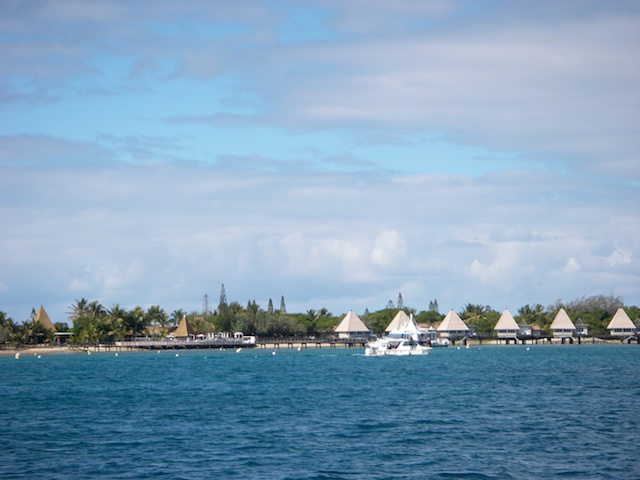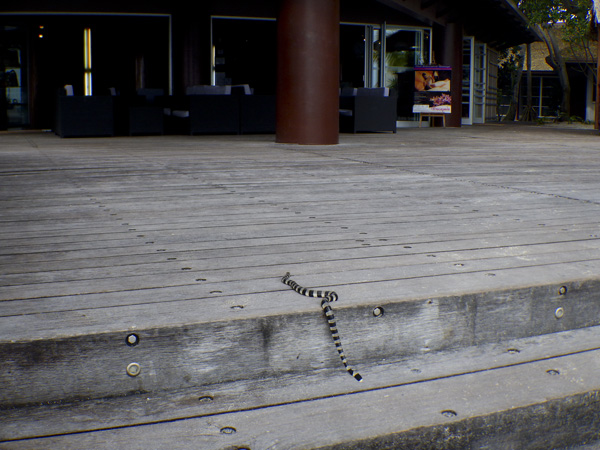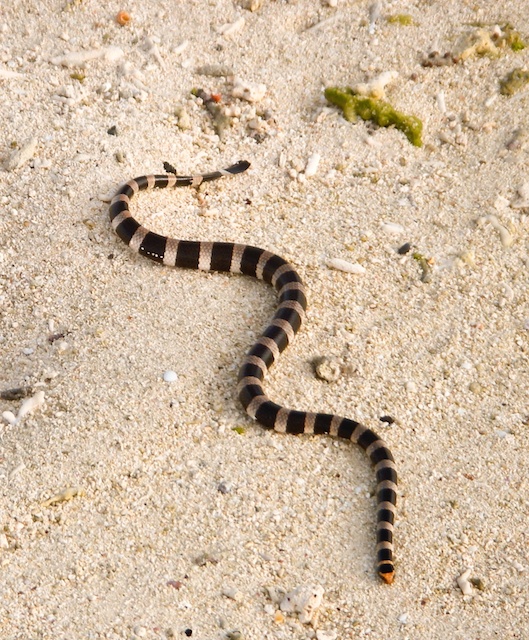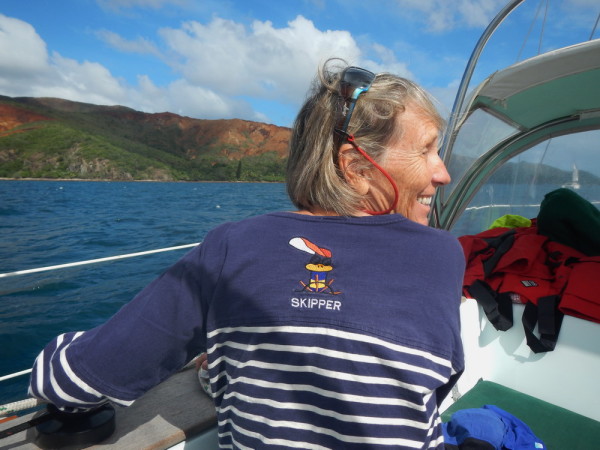Published in the Ocean Watch column, Honolulu Star-Advertiser © Susan Scott
May 26, 2014
MAITRE ISLAND, NEW CALEDONIA » One of my goals in sailing to New Caledonia was to see and admire the many sea snakes that grace this area’s reefs. One in particular answered the call. Honu wasn’t tied to a mooring off this marine preserve an hour before I had one of my best sea snake experiences ever.
 Maitre Island, New Caledonia, 2006.
Maitre Island, New Caledonia, 2006.
©2014 Susan Scott
New Caledonia is famous not just for its sea snakes, but also for its residents’ fondness of them, particularly one called “tricot raye.”
One of my books translates this French term as “striped sweater”; another says it means “striped T-shirt.” The name refers to the black bands that run around the blue-gray body, and indeed, the snake resembles the striped shirt of the French stereotype. All the snake needs to complete the look is a navy blue beret.
- Tricot Rayé – on the beach of Amadee Island, New Caledonia, 2006
Some snakes here do wear them. A shop in Noumea called Tricot Raye sells towels, bags, toys and, yes, striped T-shirts embroidered with adorable cartoon drawings of the snake on a bicycle, in scuba gear and taking part in a dozen other activities.
In English these snakes are called kraits, a krait being a snake that hunts on shallow coral reefs but rests, mates and lays eggs on land.
New Caledonia’s much-loved tricot raye is also called the yellow-lipped sea krait, but there’s more yellow to it than the lips. The whole face is yellow, a bead of brightness leading a graceful, winding body, 31 inches long in males, 50 inches in females.
Another species here, called the black-lipped krait, has a black face.
A notice on a popular beach in one of New Caledonia’s many marine preserves reads much like our Hawaiian monk seal and sea turtle signs, informing visitors that the snakes on the beach are resting and protected. Leave them alone, we are told, and enjoy their beauty.
The tricot raye is a docile creature, even when roughly handled. As a result, children here sometimes play with kraits, draping them around their necks like striped scarves.
This is a dangerous game. Sea snakes and kraits produce cobra-related venom so concentrated that a tiny amount can kill a human. Even so, only one sea snake death (that of a child) has ever been recorded in New Caledonia. If undisturbed, sea snakes mind their own business and ignore people.
Tiny Maitre Island hosts a hotel with a pier leading to an open-air lobby and restaurant built on a wooden deck over sand. Craig and I landed Honu’s dinghy at the pier, and right there, poking up through a space in the wooden dock, was the charming yellow face I had come all this way to see.
The tricot raye pulled itself onto the pier, crawled gracefully up five steps and wound its way into the lobby. When it reached a round piling at the center of the deck, the krait, ignored by workers and diners, checked into its own private room, sliding down a snake-size space to the sand below.
 Tricot Raye – Maitre Island, New Caledonia, 2014
Tricot Raye – Maitre Island, New Caledonia, 2014
©2014 Susan Scott
It’s risky to travel to a country with a specific image in mind, because the reality is often disappointing. Not this time. The sea snakes here are even better than I dreamed.
When I get back to Noumea, I’m digging out my credit card and heading straight for that store called Tricot Raye.

